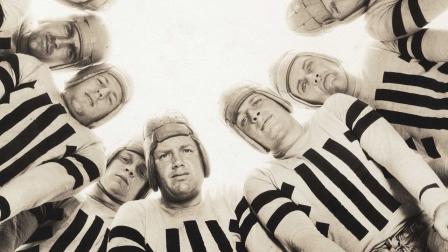Expert Tips To Make Meetings Faster And More Focused
If you think you have a lot of meetings today, you’re in good company. One Harvard Business School professor estimates that there will be 11 million meetings taking place today in the United States. The unproductive ones (an estimated third) can cost a company an astounding amount of money. In a 2014 study of time usage, Bain & Company found that just one meeting of mid-level managers per week could cost an organization as much as $15 million per year.
In an effort not to waste any more time—or money—on fruitless meetings, we’ve pulled together some pro tips for making any meeting more productive.
Make Sure There’s A Clear Objective
The antidote to the “weekly staff meeting at 11:00 a.m.” is often a simple question: What are we supposed to accomplish?
Donald Kirkpatrick, past president of the American Society for Training and Development (ASTD) told Fast Company in a previous interview to ask the organizer if the reason to get together is any of the following:
“To generate ideas, to make a decision, to get buy-in and create ownership, to answer questions about an upcoming initiative, or if the goal is to complain (rarely done best in a group setting), to sign off on something that’s already been decided (a waste of time and dignity), or when an email or phone call would suffice (costing everyone productivity).”
Read More: Three Ways to Get More Out of Your Next Meeting
Keep It Small, Make Sure The Right People Attend
Jeff Bezos is famous for his two pizza rule for calculating the number of people who should be invited to a meeting—never have more than can be fed with two pies.
The reasoning goes beyond letting any employee go hungry. Meetings with a large group tend to get bogged down. As they learned early on at Square, “decision atrophy” sets in when people start worrying about “getting buy-in from dozens of people and getting approvals three rungs up the ladder.” Smaller groups are more efficient, especially when the right decision maker is sitting at the table.
Read More: How Square is Structured for Rapid Decisions
Set A Time, Then A Timer
Latecomers are distracting and disruptive. So the staffers at TINYpulse, an employee engagement software provider are required to show up at a daily staff meeting that starts at 8:48 a.m. “It’s eliminated tardiness almost completely,” communications manager Neal McNamara told Fast Company. “It’s strange, but at 8:48, everyone in our office seems to rise simultaneously and move toward our meeting area. There’s definitely a Pavlovian aspect to the odd meeting time.”
Those who do come late should have to pay some penalty. At Cvent’s Inquisium division, tardy attendees have to sing for a seat at the table. “The biggest downside is that it has been so effective, we rarely get the opportunity to make anyone sing these days,” says vice president Darrell Gehrt.
To keep people on track, many companies have adopted setting a timer so the meeting has a clear end when the bell rings. Harvard Business Review also has a cost calculator so attendees can make a clearer connection between time and money.
Read More: How 12 Companies Make Meetings Effective, Memorable, and Short
Seating Arrangements, Or Lack Thereof
Once you’ve got them in the room, it’s important to remember that circles are more conducive to collaboration. Sitting in rows can make people more competitive, according to a study from two Canadian business schools.
Better yet, free those bottoms and take the chairs away completely. Stand-up meetings serve a dual purpose: Keeping people on their feet is healthier (sedentary death syndrome avoided) and it cuts the time. We humans prefer to sit and listen or converse, so the longer we stand, the more antsy we get. Science found that standing groups are more fired up to work together, too.
Lose The Laptops And Phones
Distraction is calling, especially when attendees can hide behind a screen. Handwritten notes, though, can be a boon for attention and retention of what’s being discussed. A study of students who took notes by hand vs. those who typed found that those using pen and paper had better conceptual recall.
Read More: 9 Science-Backed Methods for More Productive Meetings
Make The Agenda Work
Lots of meetings aren’t productive because the agenda is merely discussed instead of being turned into action. One suggestion to combat this wasted time is to change the items into questions.
Smart Leaders, Smarter Teams author Roger Schwarz suggests:
- Don’t write: “Discuss video schedule”
- Do write: “When will videos be completed?”
This way, everyone knows what the goals are and can work on meeting them.
Read More: 7 Secrets To Make Meetings Less Awful
Fast Company , Read Full Story
(25)


